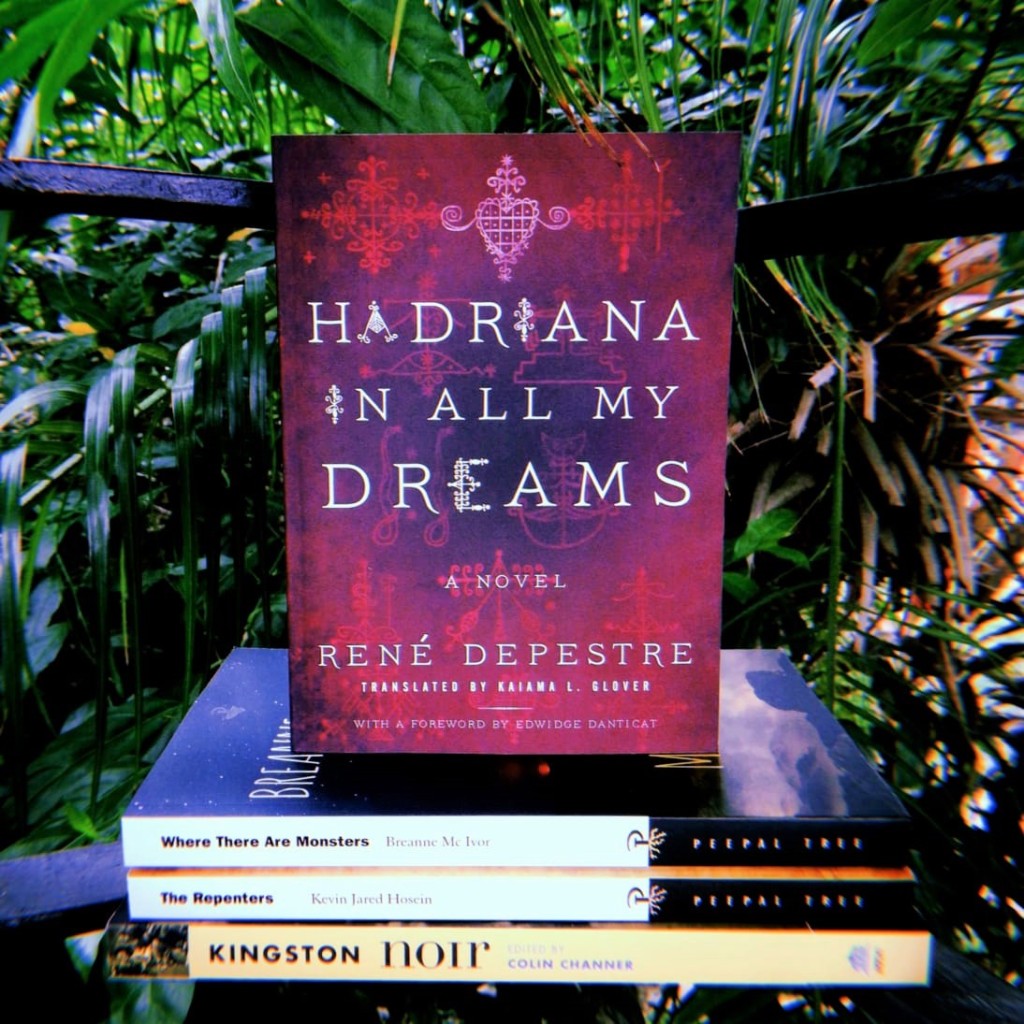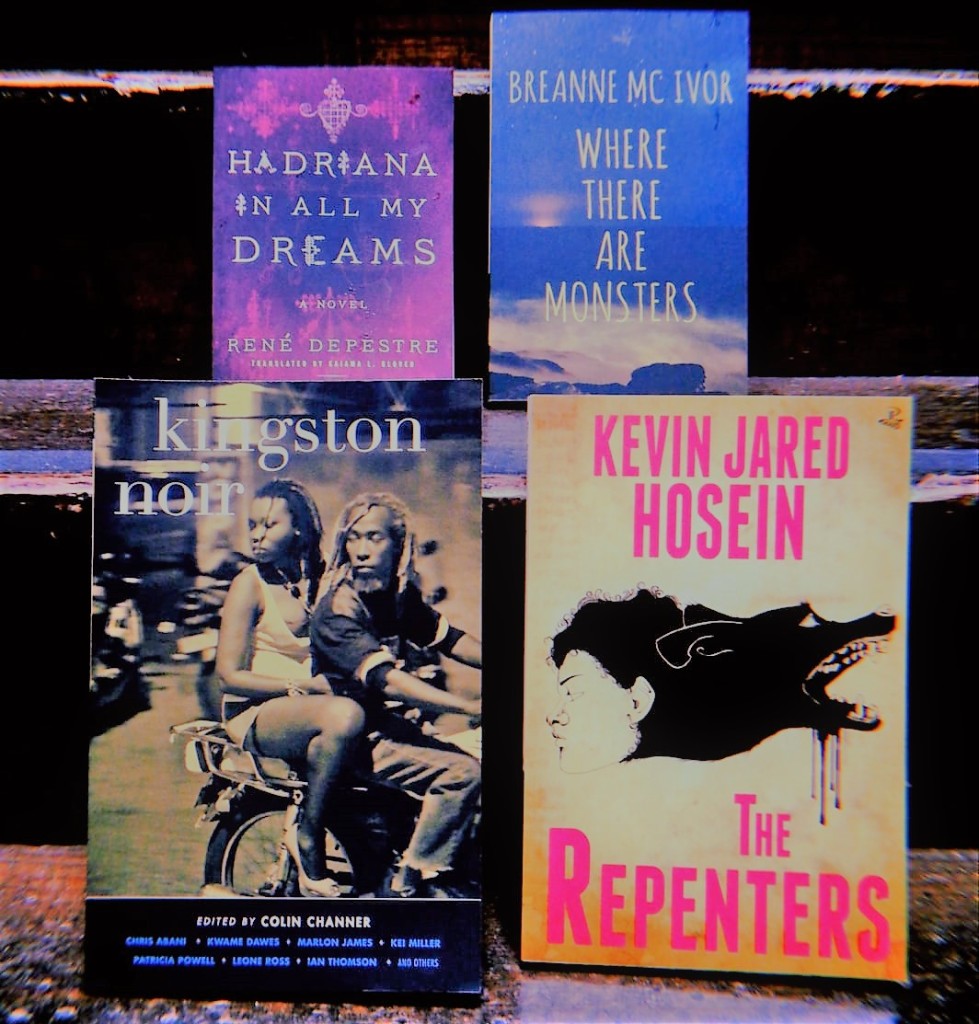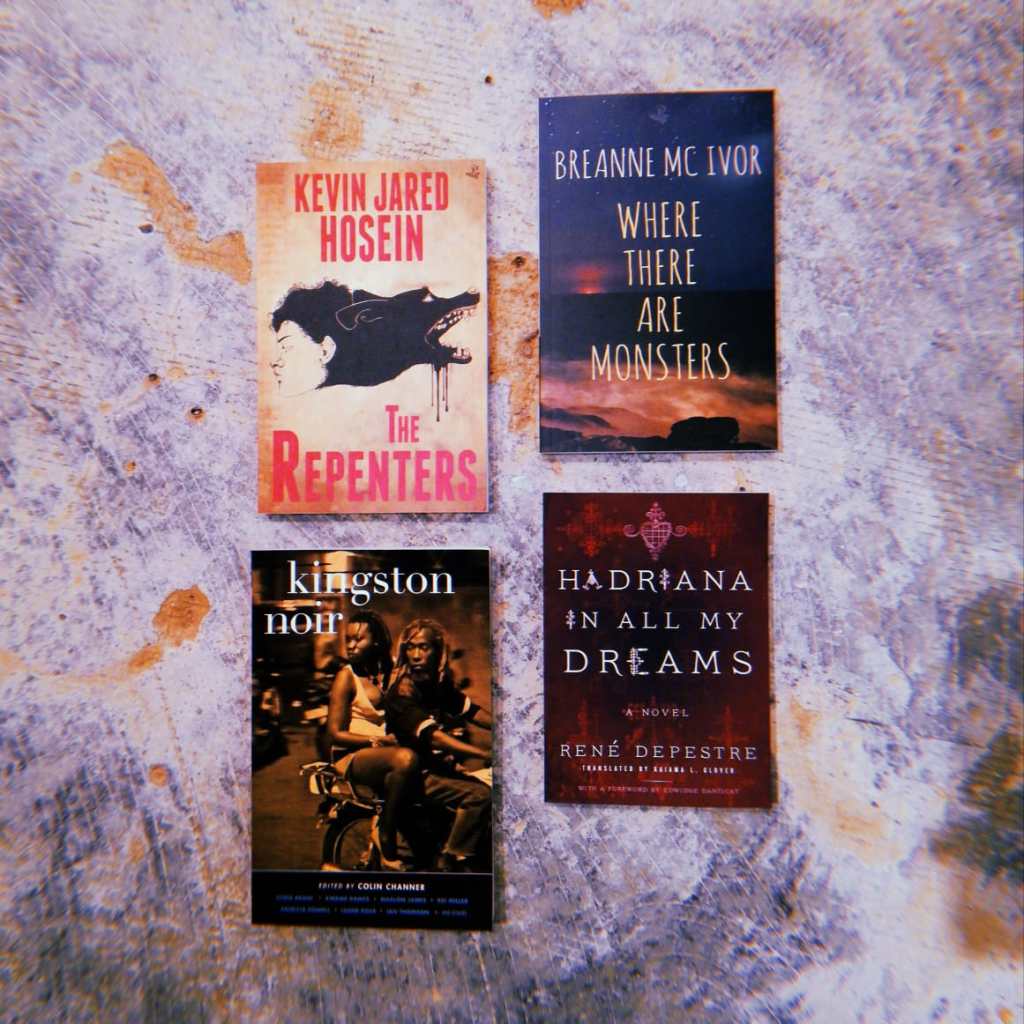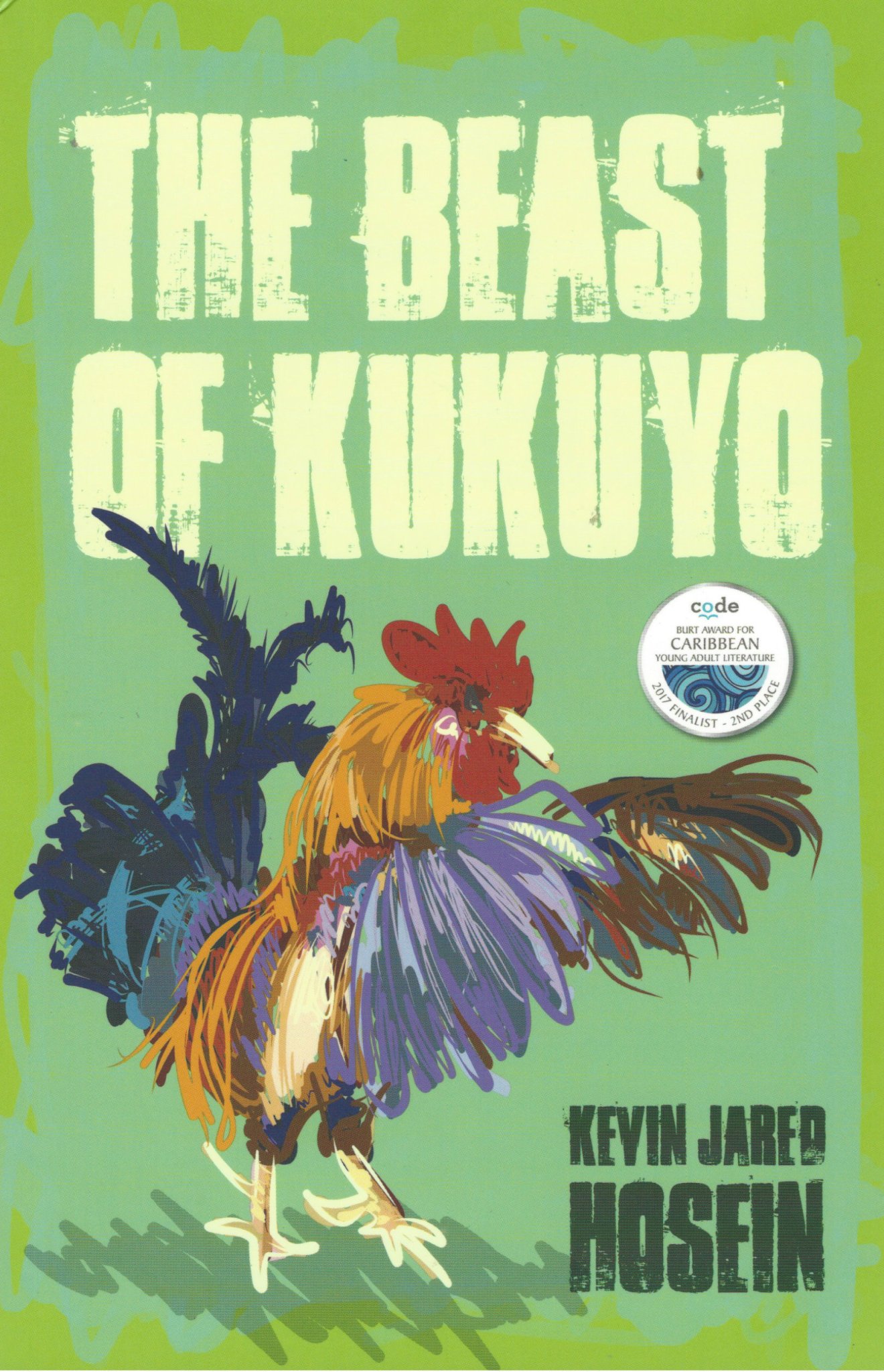by Shivanee Ramlochan, Paper Based Blogger
Images by Alicia Viarruel

We may not have autumnal leaf fall or cozy sweater weather here in the Caribbean, but we’re no strangers to our very own haunting reads. Take a peek at the current bookshelfies in temperate climes and you’ll see tall stacks of Shirley Jacksons and Stephen Kings next to pumpkin spice lattes and glow-in-the-dark ghouls: we’re joining them in spirit(s), minus the ambience but big on the thrills.
This October, Paper Based Bookshop presents a quartet of short fiction and novel picks, brimming with elements of the eerie, traces of the terrifying, and glimpses of the ghastly. Buckle in, boo-k lovers!
Where There Are Monsters, by Breanne Mc Ivor (Peepal Tree Press)
Trinidadian McIvor’s short story debut is a page-turner on several counts, not least of which is the author’s skillful braiding of folkloric elements into her fiction. The fear laced into the narratives Mc Ivor summons is chillingly psychological: sometimes, you’ll wonder as you put the collection down to pause between stories, could it be possible the monster is actually you? Let yourself linger over “Robber Talk”, which threads a winding road from the Queen’s Park Savannah and Stollmeyer’s Castle to wind up in a seemingly innocuous pastoral spot – the verdant Botanic Gardens. Yet is there more lurking in the shadows of the palms and leafy pedestrian walks? Mc Ivor believes there is: this story and the others in Where There Are Monsters are intent on taking you there, even if you scream.

Kingston Noir, edited by Colin Channer (Akashic Books)
The Akashic Noir series dismantles preconceptions about a country, a city, and the people who live, love, and war there. So it is in Kingston Noir, curated in three sections by Colin Channer, to amplify the voices that flee violence yet seem to simultaneously court it, in a grimly compelling two-step. From Kei Miller and Thomas Glave come offerings of xenophobic suspicion and anti-queer aggression that endure long in the reader’s memory. In Leone Ross’ “Roll It”, we’re laid bare by the most haunting tale of the anthology: if you doubt a model’s catwalk could be transformed into a fiery psychological site of devastation, you need to sample what Ross does with language here, before diving right into the scene of the crime. It sears, it soars, with an unforgettable brutality: an evocation of such horrors within.

The Repenters, by Kevin Jared Hosein (Peepal Tree Press)
If Trinidadian Kevin Jared Hosein uplifts the genre of Caribbean horror in our contemporary writing, colour us teeth-chatteringly unsurprised. His debut novel for adults, The Repenters, introduced its audience to a psychogeographical Trinidad beyond even the grit of newspaper headlines. As the novel’s protagonist Jordon Sant, consigned to life in the St. Asteria Home for Children, struggles to preserve scraps of happiness amidst misery and cruel caprice, he learns that the world isn’t as it seems, not even when you think you’re cheating fate with some survivor’s tricks. An orphanage with secret rooms and skittering spiders is a familiar horror trope, and Hosein elevates it to something more: it’s a place where lives are raggedly lost as much as they’re protected, where the world within threatens your safety when all the lights go out.

Hadriana in All My Dreams, by René Depestre, translated by Kaiama L. Glover (Akashic Books)
The time? 1938. The scene? Jacmel, Haiti. The situation? Wedding. Funeral. Zombies. Yes, you read that right… and there’s a lot more crypt and tomb infused bacchanal where that came from. Depestre serves us a witty, bitingly satirical take on love from beyond the grave (literally), giving us an undaunted narrator in Hadriana Siloé, whose turn at the wedding altar and cemetery plot all take place amid the effervescent, technicolour backdrop of Carnival. Jacmel is written with expansive loving attention, made into a character in its own right: here, young men morph into libidinous butterflies, sexual abandon mingles with brutality, and love struggles to win back the day from the nefarious forces of predatory violence. This is not the zombie story most Western audiences will be expecting, and it’s all the erotically richer for it.
Which of these chilling Caribbean book companions is your favourite? Which would you like to place at the top of your to-be-read ghoul-pile?

